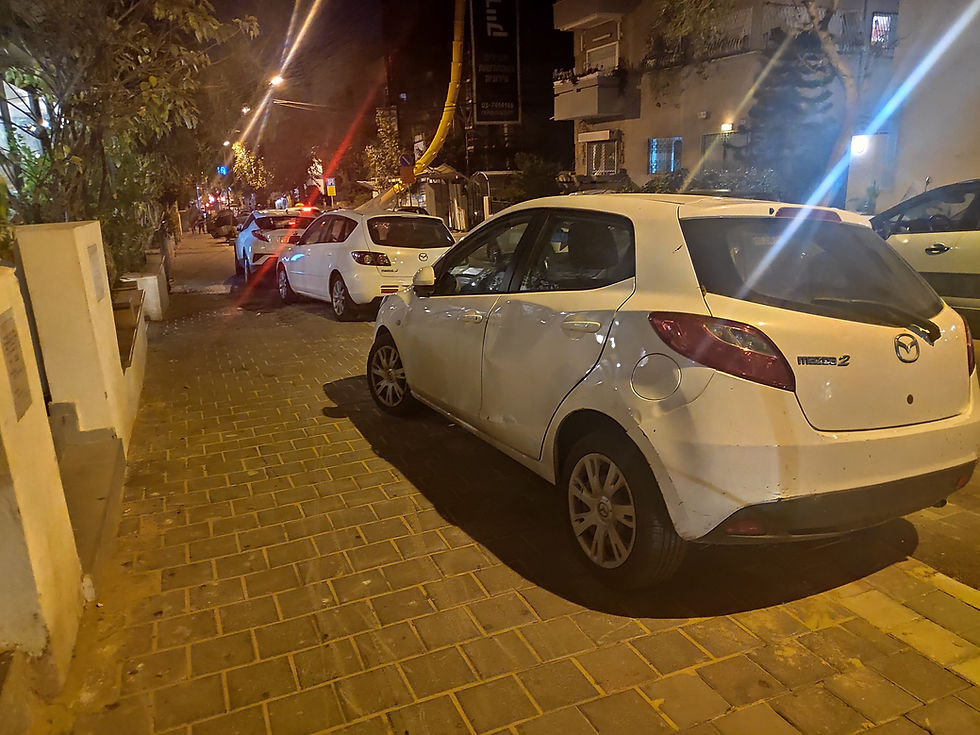2. Manage on-street parking and charge fees for local residents as well.
- Maier Yagod
- Dec 20, 2024
- 3 min read
Updated: Jul 28

Today, most of the public agrees that parking in central commercial areas should be priced for visitors. However, this is much less accepted when it comes to residents of the area. In Israel and many other places, it is customary for residents to park on the streets in their neighbourhood free of charge. This policy can lead to situations where street parking is fully occupied, even though private parking spaces remain underutilized.
Why does this happen? For many residents—especially those who return home in the early afternoon—street parking is simply more convenient. The scarcity of available street parking creates a snowball effect, as residents often prefer to keep their private parking spaces available for expected guests or family members. Consequently, residents park their vehicles on the street for an entire day, even if the visit lasts only half an hour.
This phenomenon is not significantly different in newer areas with ample underground parking. As a result, visitors often waste time searching for parking, creating additional air pollution and noise, while residents returning home late—and without private parking or with more vehicles than available private spaces—are left without legal parking options. They frequently resort to illegal parking, blocking sidewalks and crosswalks.
In central residential areas where visitor parking is paid, resident parking policies primarily focus on "protection." These protection policies fall into two categories:
Protection against visitor parking fees: Residents are granted a regional parking permit, usually free of charge and often without limits on the number of permits per household. Visitors are allowed to park for a fee.
Exclusive resident parking zones: Residents can park with a permit, often free and unlimited, while visitors are prohibited from parking entirely. Some plans combine these approaches, such as allowing visitors to park only on one side of the street or within certain hours.
In the short term, such policies provide residents with relief. However, in the long run, they encourage residents to fill the streets with additional vehicles, further underutilizing private parking and reducing municipal revenue. It's important to note that while parking regulations require developers to create parking spaces, they do not obligate residents to use them.
A resident parking policy that maximizes the use of private parking, while ensuring that street parking serves residents and their guests and maintains road safety, should include two main components:
Priced parking for all users, including residents.
A limited number of vehicles each household can park on the street.
What should the fee for resident parking be? The answer is not simple, but a general rule of thumb is to set the fee at a quarter of the rental price for an adjacent private parking space. For example, if such spaces cost around 400–500 NIS per month in a given area, a resident parking permit could be priced at 100–130 NIS per month. However, daily (5–6 NIS) or weekly (25–30 NIS) rates are preferable to annual permits.
If there are streets with low demand for resident parking in the evening, such as areas with few residential buildings or more public structures, or if there are public parking lots where the municipality can charge for usage, these spaces should be priced at a discount. This approach distributes demand across a larger area and relieves pressure on crowded residential streets.
Because these prices are typically lower than market rates and setting market prices is often politically challenging, it's essential to cap the number of permits each household can receive. The number of permits should depend on the available parking in the area, including private parking spaces per household. For instance, if households are limited to two parking permits, those with one private parking space should only be eligible for one street parking permit.
Additionally, households should be allowed to purchase a limited number of discounted vouchers annually (e.g., 20 vouchers at 10 NIS each) for their visitors.
When designing such a program, businesses, public institutions, and their employees must also be considered. Parking should be managed to ensure that those who need it, can park easily and close to their destinations, while others are encouraged to use faster public transportation or enjoy safer pedestrian environments. It is recommended to offer employees parking benefits similar to those for residents, albeit at slightly higher prices (e.g., 10–15 NIS per day), and direct them primarily to parking lots, leaving street parking available for customers. If necessary, the number of permits per business or public building should also be limited.



